BERNARD JANSON - PALETTE KNIFE PAINTING
Oil on canvas; Painting knife technique.
A brief story of the painting knife and of its use.
What we call palette knife is a small trowel whose shape and blade are adapted for the artists painters in order to replace the brushes.
The first known uses date since the 17th century. But it is with the artists painters Constable and Courbet who used it in a systematic way, that the use of the painting knife has been popularized.
With the classical painting, the brushstrokes should not be visible, but it was the contrary with the impressionist painters, they made their brushstrokes visible. It is in the continuation of this way of painting of the impressionist painters that the use of the palette knife has spread. In fact, with the painting knife, we can clearly distinguish the work of the artist. The well visible relief and impasto give a particular style, and an original aesthetic to the artwork done this way.
Steps for painting a canvas with oil palette knife painting.
first step; photos.
- I only use my own photos. So, I never use pictures made by other people. I see no reason to use pictures made by other people.
- When I am before a landscape I like et I think it can be painted, I take pictures of it. By doing so, I take into acount the distribution of shadows and lights and the distribution of foreground, medium shot and backgrounds.
- As I am not sure to come back later before a choosen landscape to paint, I generally take pictures with several frames. This give the ability to choose later the best suited picture to paint the canvas.
- For the subject displayed below, an ancient stone bridge, I have first taken a serie of photos of the illuminated bridge and then another serie of contra jours photos.
-
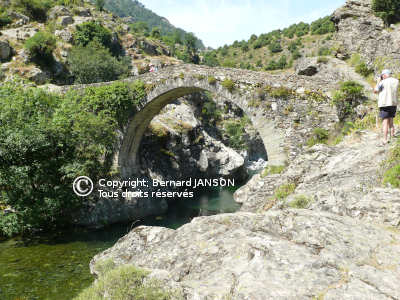
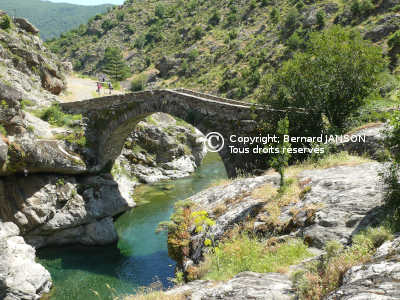
second step; sketches.
- I have drawn three sketches; one with the sunny bridge, another with the sunny bridge and a hicker, and finally one with the contra jour bridge.
-
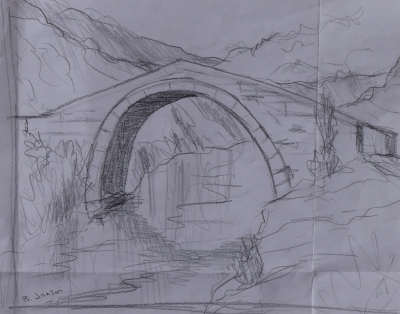
Sketch with the old sunny bridge.
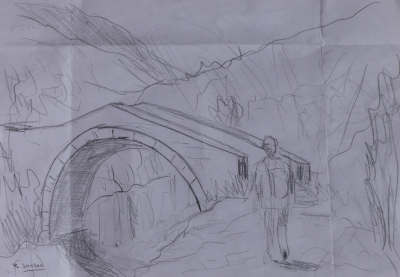
Sketch with the old sunny bridge and a hiker.
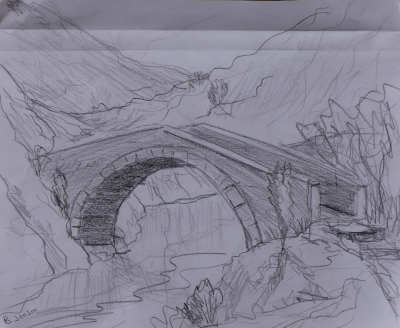
Sketch with the old bridge in contra jour.
third step; painting the subject.
-
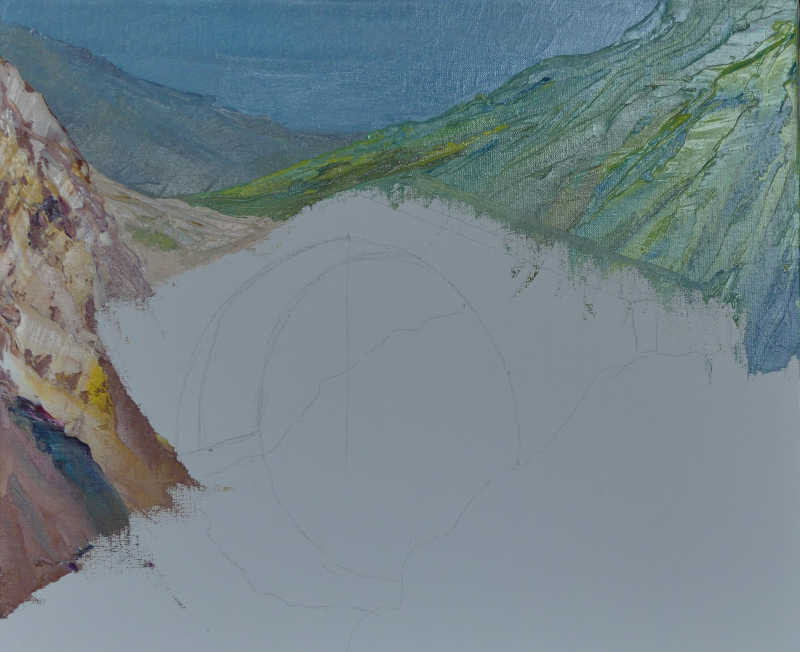
I begin to paint by the background, and I simplify the shapes of vegetation to give more importance to the foreground that will be more detailed.
-
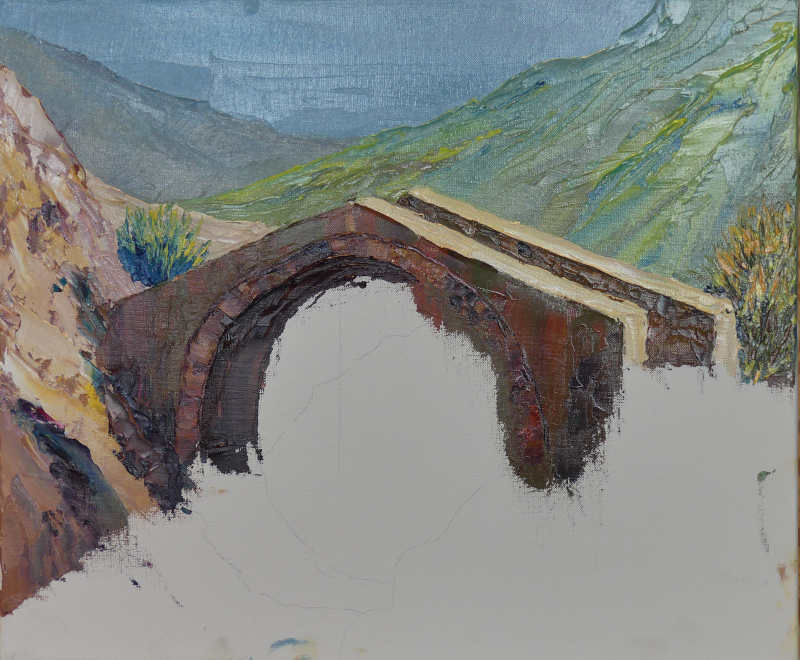
Work in progress, we begin to see the old bridge.
my colors are often different from the original colors.
The creativity process continues. The result will be a personnal creation which will not be a faithful copy of nature.
- Click here to see the finished canvas.
Here are some characteristics about my way of using the palette knife.
The exclusive use of palette knife is relatively recent and less widely than brush. The origins of palette knife probably back from the eighteenth century. At this time it was mainly used to mix colours on palettes. The impressionists painters began to use it together with the brushes. Learning to paint canvas with palette knife takes longer time than brush and is more difficult.
With this technique, oil paint becomes thick substance. The artist painter must have a more synthetic vision of its artwork, and he has to suggest what he paints rather than to show accuractly what he sees.
Parameters that are into play, in my view, for a good use of palette knives.
The different pressure of the knife on the canvas produces different and interesting textured effects.
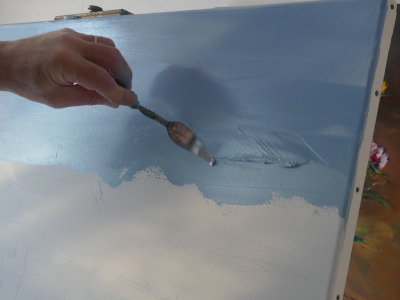
With the inclination of the palette knife or also with the use of the tip of the blade we can obtain dots or fine lines.
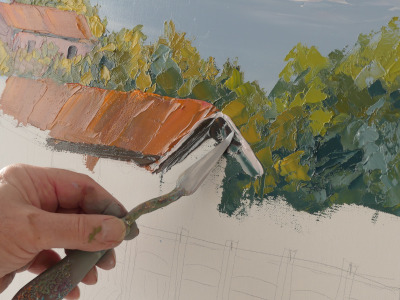
We can obtain thick or thin layers of colors depending on the speed of the gesture.
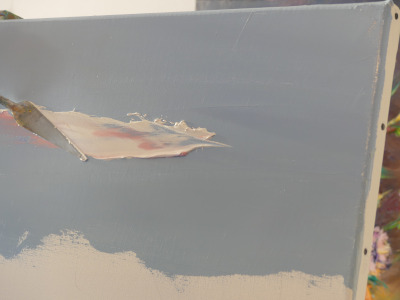
The flexibility of the knife blade allows the artist painter to use several gestural actions such as spreading, scumbling or swearing.
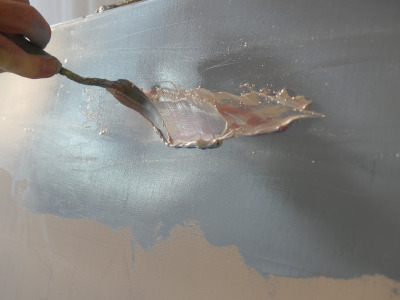
Wet-on-wet is my painting technique. This technique is also called by specialists ALLA PRIMA. So, when I begin a canvas I must finish it quickly.
I place a great value to the composition of my artworks.
DIFFERENCES BETWEEN PAINTING KNIFE AND PAINTING WITH A BRUSH.
The most significant difference is the effects of thickness we can get more easily with palette knives.
The second difference is the cleability of the palette knives. A simple wipe on the blades is enough to get them clean, while brushes are less easy to clean mainly with oil paint. So, with palette knifes the colours are always clean if due precautions are taken.
Another difference is the opportunity to mix the colours directly on the canvas, with that we can get surprising effects; see the picture above.
On the other hand the advantage of brush on palette knife is the easily to paint tiny details.
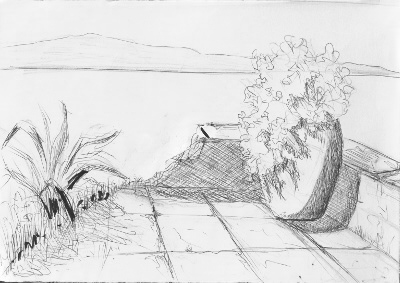
SKETCH WITH A VIEW TO PAINT A CANVAS.
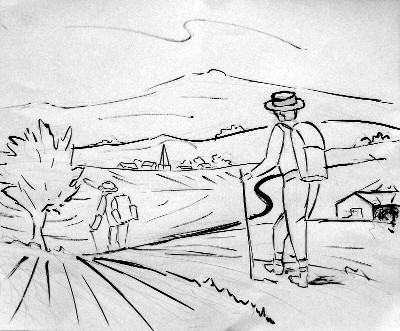
ANOTHER PREPARATORY DRAWING TOWARD THE REALIZATION OF AN ARTWORK.
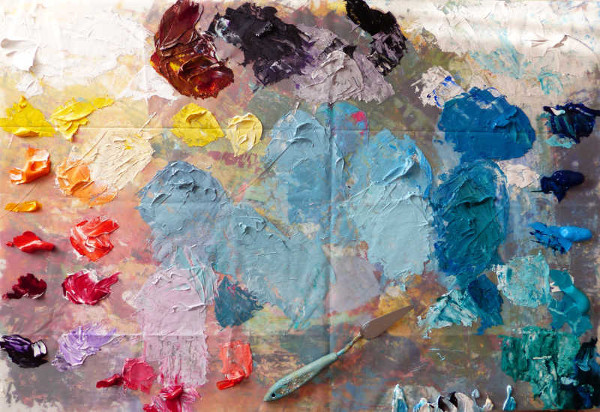
MY COLOURS PALETTE DURING PAINTING A CANVAS.
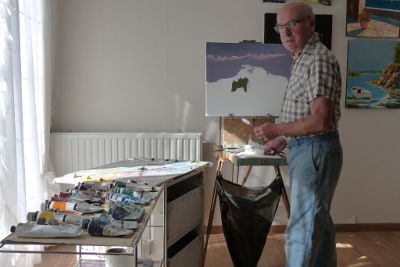
A PARTIAL VIEW OF MY PAINTING WORKSHOP.
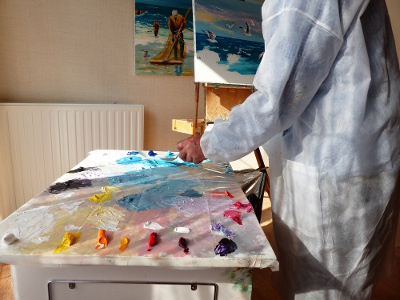
ANOTHER PARTIAL VIEW OF MY STUDIO.
WHAT TO PAINT WITH.
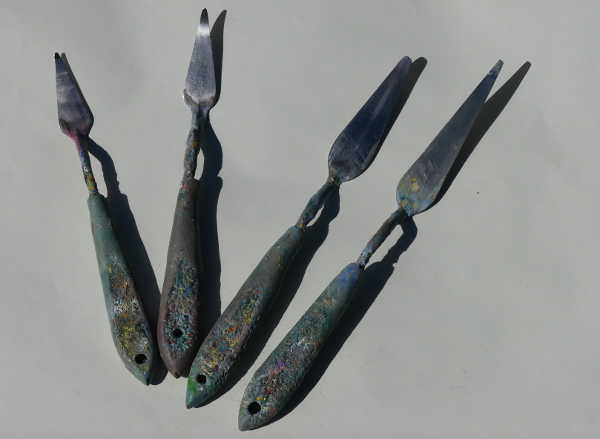
PALETTE KNIVES.
Specialy configured to artwork, it is preferable to use different sizes. I use palette knifes with rounded corners.
Those with sharp corners are inappropriate with my way of painting.

PALETTE.
I use a white thin wooden board. Size 80cm by 55cm.
For practical reasons, I strive to always put the same hues at the same place, warm hues on the left and cold hues on the right side of the board.
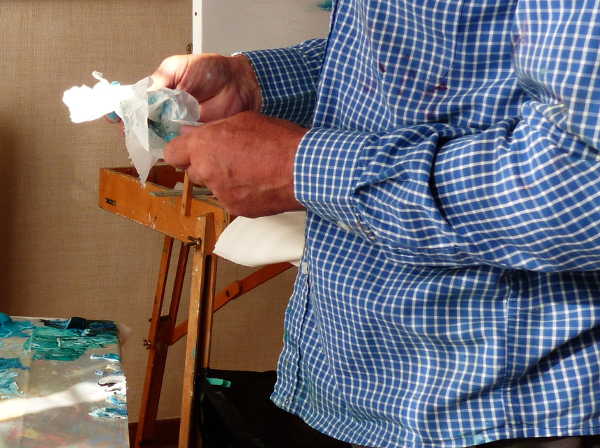
PAPER TOWELS.
I use a lot of paper towels, the cleanliness of the palette knife blades is for me a prime means to got nice colours.
With a palette knife that would not be clean, colours would be contamined, and the result will be muddy.
A GARBAGE BAG.
For getting rid of the soiled paper and empty paint tubes.
PAINT TUBES.
I use large tubes, 200 or 225 ml. Pictures below show some samples of my usual colours. They are mixed with a small amount of white.
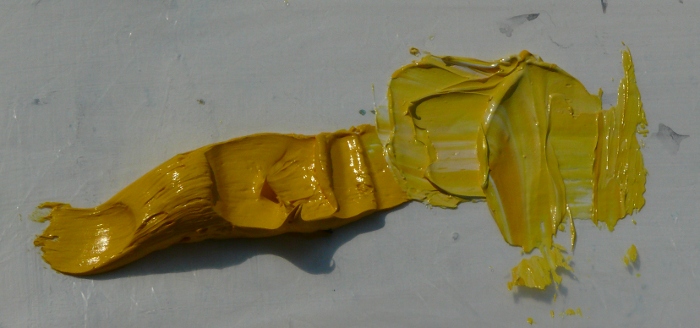
yellow
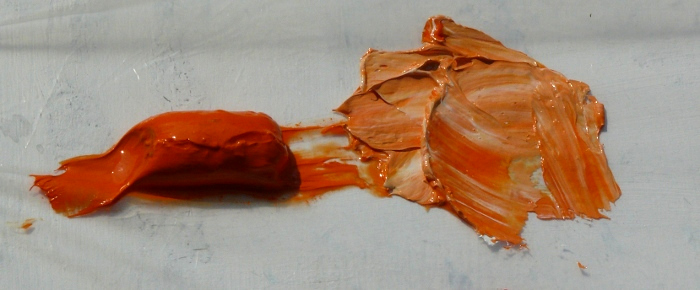
Orange
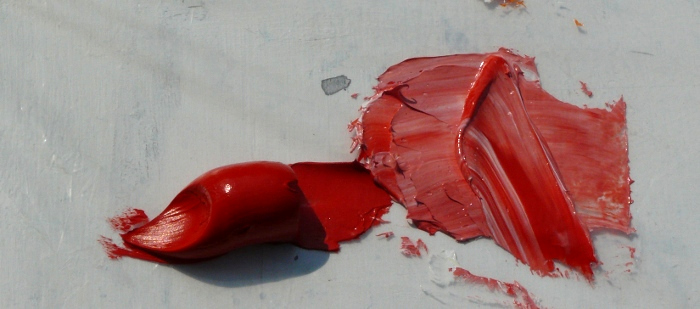
Red
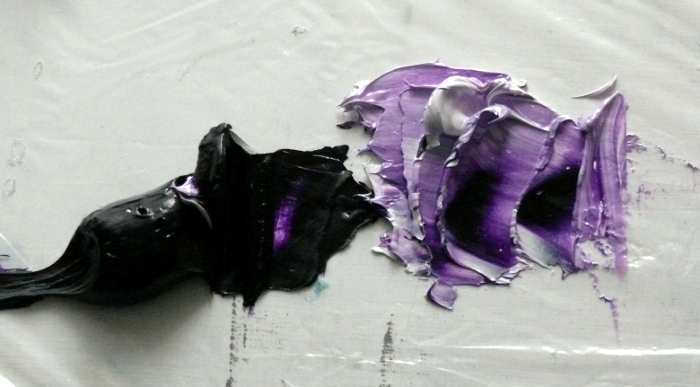
Purple
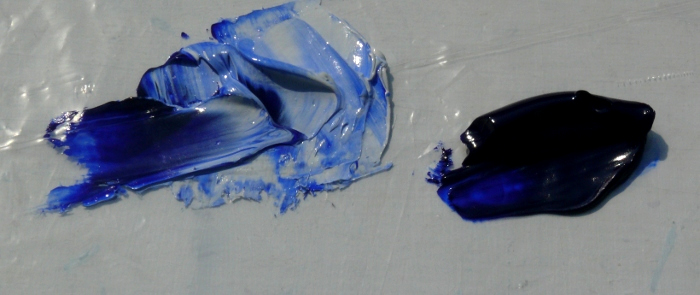
French ultramarine
